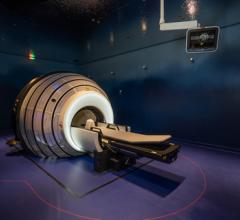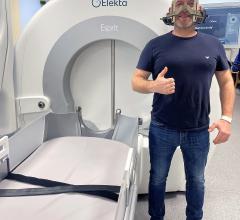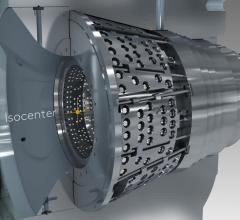
Iris C. Gibbs, M.D. is a radiation oncologist at Stanford University.
Advances in the medical field have allowed physicians to treat cancer patients in a number of different ways, including surgery and radiation therapy. These advances have helped to prolong lives and made treatments possible where none were before. But when deciding on the right post-surgical therapy, radiosurgery may offer equal or better results than radiation therapy, and with less side effects.
Treatment Options
Surgery can be an effective way to treat and eliminate tumors; however, depending on the type of cancer, the location of the tumor and the health of the patient prior to surgery. There may be a number of side effects associated with surgery and a significant amount of recovery time for patients to consider when choosing this treatment option.
Radiation therapy either used alone or as an adjunct to surgery or chemotherapy used to destroy cancer cells is an effecitve treatment option, and according to the National Cancer Institute, about half of all patients diagnosed with cancer choose to receive some sort of radiation therapy as part of their cancer treatment.
Used effectively to treat cancerous and noncancerous tumors in the body. This includes tumors in the breast, lung, prostate, cervix, stomach, pancreas, brain and spine. When choosing radiation as a treatment option, there are a number of different radiation treatment methods to consider. In most cases, the goal of the radiation treatment is to completely destroy the growing tumor as quickly as possible while minimizing damage to surrounding healthy tissues. In other cases, the goal may be to shrink the tumor to prevent further pain for the patient. In most centers, the type of radiation used for therapy is high energy X-rays. These x-rays travel through the body and tumor and cause the tumor to die by damaging the tumor cells’ DNA.
Traditionally, a large area of healthy tissue (margin) surrounding the cancer has been included in the high doses region of radiation leading to a high risk of damaging healthy tissue. Additionally, there is also greater risk for side effects when these areas receive radiation, making it crucial to stay on target with the tumor. In order to provide some protection against healthy tissue damage, radiation treatments are usually divided into a number of fractions that are delivered every day over a period of weeks. A course of treatment can last up to eight or more weeks, which can be tiring and burdensome for patients to travel back and forth for treatment. More recently, newer radiation techniques called intensity modulated radiotherapy (IMRT) and image-guided radiotherapy (IGRT) have greatly diminished the damage to healthy tissue.
Proton beam therapy is another form of radiation therapy that may be used to treat cancer. Like X-ray therapy, this type of treatment treats tumors by damaging the DNA of the cells, causing them to die. However, unlike X-ray therapy, this treatment uses proton beams. The proton energy can be adjusted to be deposited mainly within the tumor and thereby may deliver less radiation to areas surrounding the tumor. This effect can help to preserve the surrounding organs and tissues and reduce the risk of side effects. The downside of this type of therapy is that protons can only be delivered by a particular type of machine, which costs $30-150 million to install. Therefore, only a few treatment centers in the United States offer proton beam therapy treatment.
Radiation Therapy Expands to Radiosurgery
For more than 50 years, stereotactic radiosurgery has been used as an alternative or adjunct to surgical treatment for intracranial (brain) tumors. Because stereotactic radiosurgery requires no cutting, it is often an effective alternative to surgery.
Radiosurgery works by delivering a large, precise radiation dose to a tumor. Some radiosurgery devices require a rigid metal frame to be screwed onto the patient’s skull to immobilize the patient during the treatment. Since there is a need for the frame, these systems are generally limited to intracranial treatments. However, recent advancements in technology — such as image-guided robotic radiosurgery — no longer require use of this invasive head frame. Robotic radiosurgery makes use of continual image guidance as well as computer-controlled electronics to track the position of the tumor, detect for patient or tumor movement, and automatically correct the treatment to minimize damage to healthy tissues surrounding the tumor. These distinctive characteristics allow physicians to treat solid tumors anywhere in the body, including the spine, lung, liver, prostate and pancreas, among others, with very small margins. When radiosurgery is applied to these areas outside of the brain, it is sometimes called stereotactic body radiotherapy (SBRT).
With the use of image-guidance technology, physicians are better able to track tumor movement during the treatment process. This is especially important when dealing with patients who have lung, pancreas or prostate cancer, because those organs tend to move and are close to other vital organs. Some image-guided radiation systems turn on the radiation beam only during certain reproducible time periods of the breathing cycle in a process known as “respiratory-gating.”
However, some lung cancer patients often have respiratory problems that make it difficult to achieve regular breathing patterns needed for respiratory-gating. The image guidance technology available with robotic radiosurgery has the unique ability to automatically track during active breathing without having to stop the treatment during parts of the breathing cycle. Because of the ability to automatically correct for patient and tumor motion, the beams of radiation are able to stay on target with the tumor while the patient is breathing, rather than having the patient hold their breath, allowing the patient to feel more comfortable during the treatment process.
With prostate cancer patients, factors such as gas and digestion can cause the prostate to move during the treatment process, but by using image-guided robotic radiosurgery, physicians are able to continue treatment and stay on target to ensure only the prostate is receiving radiation.
In addition, robotic radiosurgery has become a feasible alternative for patients who have surgically complex or inoperable tumors, patients who are medically inoperable and are looking for an alternative to surgery, and patients who cannot tolerate the radiation dosages from traditional radiation.
While traditional radiation therapy administers radiation from a few directions in a single plane of rotation, robotic radiosurgery can deliver more than 100 beams of radiation via a moveable robotic arm, delivering high doses of radiation directly to the tumor with very little radiation being delivered to nearby critical structures, preventing harm to the surrounding healthy tissues and organs. Radiosurgery or SBRT may be an ideal option for patients who are not candidates for surgery.
Another aspect to consider with robotic radiosurgery is recovery time and side effects. Generally, radiosurgery and SBRT treatment is done within one to five treatments sessions, each lasting on average less than one hour. Patients wear street clothes into their treatments and can listen to their favorite music in a comfortable atmosphere during treatment. After treatment, most patients can drive themselves home and return to their normal activities. Many patients prefer this over several weeks of daily treatments with traditional radiation therapy. Additionally, patients who have received this type of treatment have reported few side effects.
Hospitals and medical centers are expanding their radiation oncology departments by bringing radiosurgery and SBRT into their facilities. Stanford University Medical Center located in Stanford, Calif., has been treating patients using robotic radiosurgery since 1994. It is important to note that not all patients with cancer should be treated with radiosurgery or SBRT. Due to our long experience at Stanford in studying these treatments, referring physicians have relied on our expertise to treat patients from around the world and to determine when these treatments are most appropriate. Since 1994 we have treated about 4,500 patients with tumors throughout the body. Our studies have confirmed radiosurgery and SBRT are effective in the management of benign and metastatic spinal tumors, inoperable early stage lung cancer, locally advanced pancreas tumors, liver tumors and certain prostate cancers. Treating over 700 patients annually, the Stanford radiosurgery and SBRT program remains one of the most active programs in the world.


 September 12, 2025
September 12, 2025 









